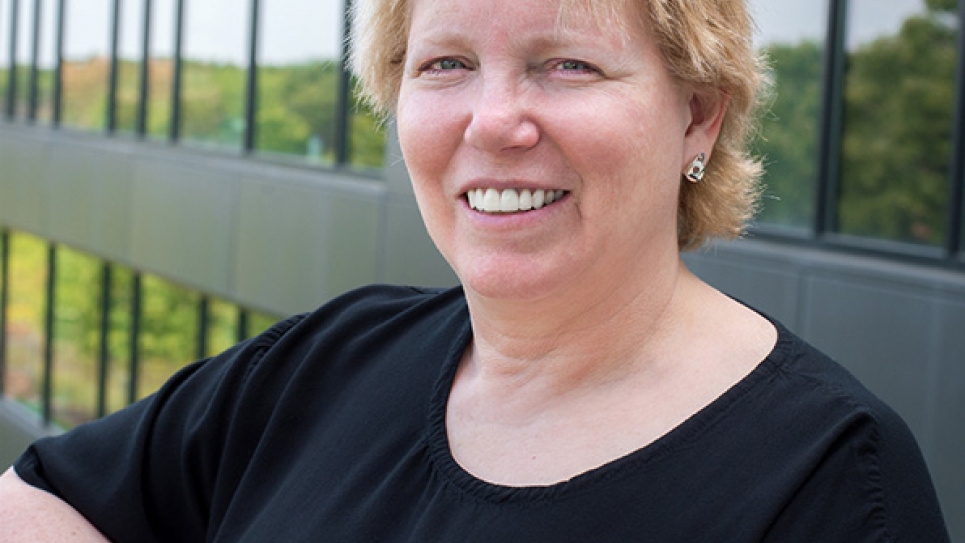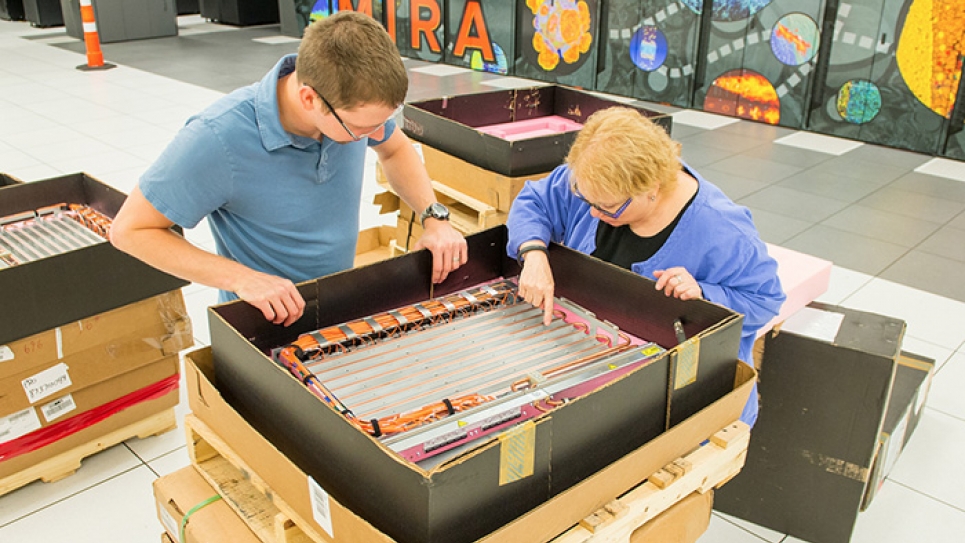
Minding Mira
Deputy Division Director Susan Coghlan works with Mira, the fifth-fastest supercomputer in the world, at the Argonne Leadership Computing Facility.
What role you play at Argonne and what kind of work you do?
I'm the Deputy Division Director at the Argonne Leadership Computing Facility (ALCF), and I’m also the project director for the large supercomputing systems that we bring into the lab. In many ways, acting as a project director is my primary role, because the large computer systems we bring into the ALCF are multimillion-dollar systems.
There’s a lot that goes into overseeing this, as it takes large amounts of our staff’s time and coordination working with our vendors, making sure we're getting what we need, and also ensuring that the system, as delivered, meets the U.S. Department of Energy’s mission needs, as well.
The ALCF is home to Mira, the fifth-fastest supercomputer in the world, which is now in full production mode and available for scientific research. Can you talk about the process of getting to this important milestone for Argonne and the ALCF?
Typically, it takes about five years, from start to finish, to complete a project like this – to go from preparing a budget and figuring out what type of system is possible to the delivery and deployment of the system. So, we actually started the planning and documentation process for Mira in 2008. In this case, we worked very closely with our vendor, IBM, and also had a close collaborative R&D relationship with Lawrence Livermore National Laboratory and IBM. I was responsible for making sure we had the right people and appropriate experts at Argonne reviewing the designs, providing the feedback to IBM, approving design choices and looking at applications and their performance on the different designs as they moved forward.
The delivery of the first racks for Mira started in April 2012, and that process of delivery, then build-out, went on until July 2012. After delivery, the system moved into the acceptance preparation phase, and finally through the acceptance tests. Mira was accepted in December 2012. Initially, the research being run on Mira was part of the Early Science Program (ESP), and now that Mira is fully online, it is open to all research, including work being done that is part of the Innovative & Novel Computational Impact on Theory and Experiment (INCITE) program.
We have a large team of people that worked very closely with each other, and it’s satisfying to see all of this collaborative work successfully come together.
How does your work support the lab’s larger scientific mission?
Mira is available to any scientist in the world. So, we support the community at large to help provide solutions to the grand challenges of our time, including sustainable energy, a healthy environment and a secure nation. We have simulations running on Mira right now that are looking at providing better batteries. We have industry doing research to help design better wind turbines. Scientists are also working to understand the fundamental properties of water, as well as simulations estimating ground motion caused by earthquakes that will be used to produce a high-resolution hazard map for California. The set of projects that we have running on Mira changes from year to year, but they are all looking at the largest, most important science problems that exist today.
What do you like most about your job and working at Argonne?
The people are great to work with and are really friendly, and you definitely have the opportunity to get to know lots of people. As a technical person, for me coming to work for the ALCF within the Computing, Environment and Life Sciences directorate was a perfect fit. There are a lot of brilliant people here, and they love to collaborate, share and talk with each other.
There are also a lot of opportunities to explore the research space, and I like that. When I first started working at Argonne in 2002, I worked at the Laboratory Computing Resource Center. That was my first role, overseeing things with our Jazz supercomputer, acting as the system administrator. After that, I started being involved with planning for our next supercomputer, Intrepid, leading to where we are today with Mira.
What are the things you find most exciting about the work you are doing?
I like challenges, and there are a lot of them in my role. I have challenges in the project management space and in the technical space. I get to hear about future architectures and rollbacks from our vendors, so I learn about exciting new technology before it's out in the world, and that's a lot of fun.
With Mira, we have an exceptional machine that’s an excellent resource for scientists around the world to do amazing science, and I truly enjoy that. I like helping people and the fact that what comes out of it at the end is pretty spectacular and special.
